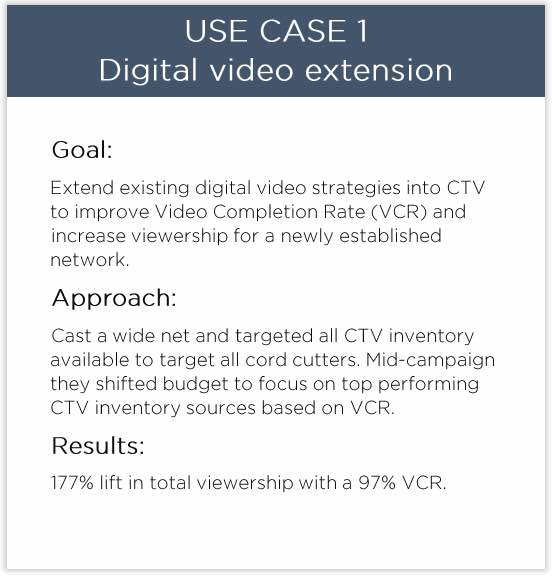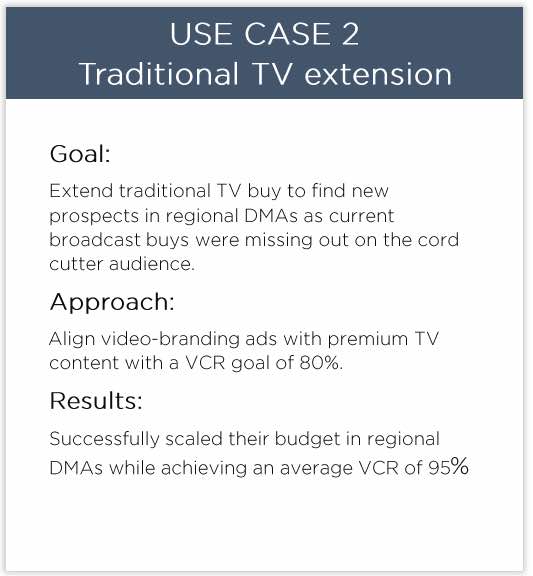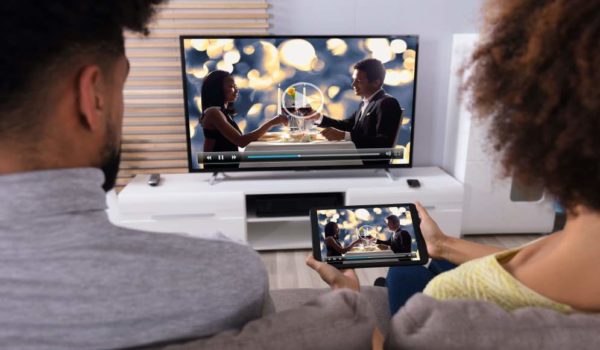The share of people cutting traditional paid TV out of their lives rises every year. There are nearly 70 million U.S. households that have a connected TV streaming device. Connected TV advertising refers to the process of serving digital video on an internet-enabled television during TV content, giving viewers an experience that’s similar to watching traditional TV commercials.
The large scale migration from traditional broadcast and cable television to Connected TV streaming has presented an opportunity for brands to reach their consumers in an entirely different experience. Connected TV allows advertisers to deliver their ads to users that are hyper engaged in long form media consumption.
So now that you know what connected TV is in the simplest terms, why make it a part of your overall advertising strategy?
Extend your digital video and broadcast TV reach
Many businesses invest a lot of money in video assets. The good news is that you don’t have to invest any more money to make those assets appropriate for connected TV. Shifting some funds from digital video or broadcast while using the same video assets to extend your reach is an easy step toward integration CTV into your overall marketing strategy. We have worked with several clients that have seen great success by shifting toward CTV:


Create Efficiencies with your advertising dollars
Where traditional TV falls short in its ability to target outside of a geography, Connected TV takes the hyper-targeting abilities of other digital media and applies them to television. In a study conducted by Roku in partnership with MAGNA, four brands – Applebees, H&M, McCormick and Truvia were tracked and measures among 4,621 consumers. That study found that the precise targeting that allows brands to reach high-value audiences spurred more brand lift per exposure than linear television. Those brands also needed fewer exposures to consumers to achieve comparable brand lift to traditional TV ads, with traditional TV needed 10 exposure events versus just 7 for OTT. And that number gets even lower when OTT and linear TV are combined.
More Transparency
If you wanted proof your ad ran in a magazine or newspaper, it was easy to see with your own eyes. The same goes for digital display when you can see a screen grab, proving your ad was served. Television was never able to truly offer that same level of transparency. Connected TV is able to prove your ads run in the same way that digital display can.
You’ll also be able to get the same kinds of metrics reports that you would get from digital ads in terms of impressions, viewability, view rate, etc.
Increase Control
With traditional TV, it’s much harder to optimize your ad spending mid-campaign based on performance. If you have a firm grasp on your KPIs, you can monitor the CTV performance and adjust the targeting and frequency along the way to ensure your ad dollars are being spent wisely.
It’s worth noting while we sing the praises of Connected TV, it will be a very long time before it completely supplants linear TV. And it may never truly replace it as broadcast TV makes strides in serving advertisers in a better way. How you can really leverage the power of these emerging technologies and ad platforms is by working with a media partner that prioritizes an integrated marketing strategy and knows how all platforms work together to achieve success.

